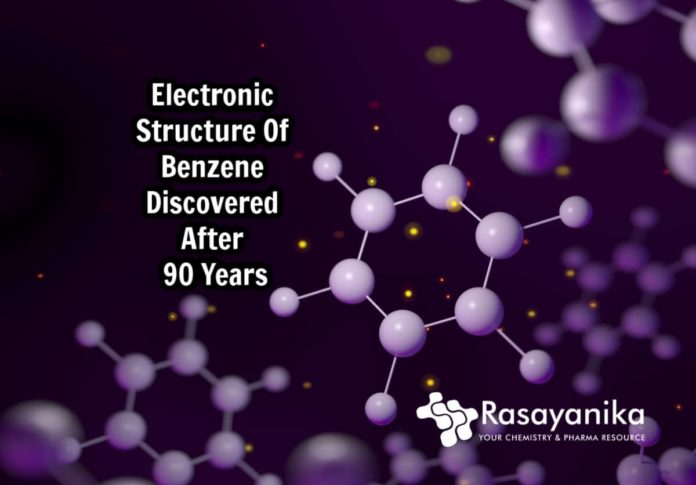Basic Electronic Structure Of Benzene Discovered After 90 Years
A collaboration between CSIRO, Exciton Science, and UNSW solved one of the fundamental mysteries of chemistry. The results could help in future designs of organic light-emitting diodes, solar cells, and other next-gen technologies.
The basic electronic structure of Benzene was a subject of debate since 1930. But since Benzene, the six-carbon ring with six hydrogen atoms, became the fundamental building block of many opto-electronic materials that play a crucial role in telecommunication technology and renewable energy, the debate has gained more attention.
Benzene is also an essential component in petroleum, wood, proteins, and DNA.
The electrons in Benzene exist in a state comprising more than four dimensions, which raises the controversy about the structure of the molecule.
The precise behavior of benzene electrons could not be discovered as analyzing a system that complex was nearly impossible until now. And it would have been difficult to wholly understand the stability of the molecule in tech applications without this information.
But finally, researchers led by Timothy Schmidt from UNSW Sydney and the ARC Centre of Excellence in Exciton Science have successfully understood the electronic structure of Benzene. Nature Communications published the results
A
complex algorithm-based method called dynamic Voronoi Metropolis sampling (DVMS) was applied by Professor Schmidt and team to benzene molecules in order to map their wavefunctions across all 126 dimensions.But the mathematical algorithm which became the key to unraveling the complex problem was developed by co-author Dr. Phil Kilby from CSIRO’s Data61. The dimensional space was partitioned into equivalent “tiles” using the algorithm, each corresponding to a permutation of electron positions.
Understanding the “spin” of the electrons was of great interest to scientists. How the electron spin that produces magnetism interacts with each other is the foundation of many technologies ranging from light-emitting diodes to quantum computing.
Scientists discovered that the electrons with what’s known as down-spin single-bonded, where those with up-spin double-bonded, and vice versa. It stabilizes Benzene by reducing its energy.
The algorithm Phil Kilby developed can be used for a wide range of areas, including staff rostering and kidney exchange.
Editor’s Note; Basic Electronic Structure Of Benzene Discovered After 90 Years, Dr. Phil Kilby’s algorithm helped the discovery.

















































